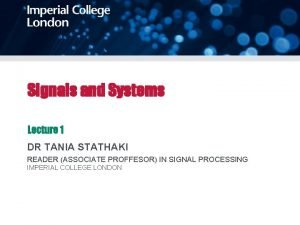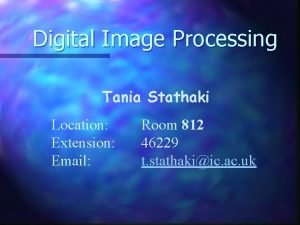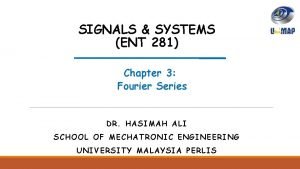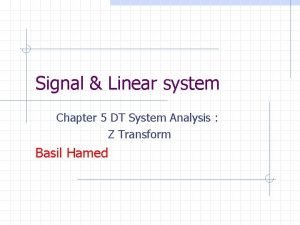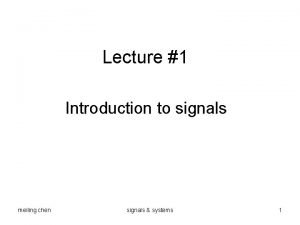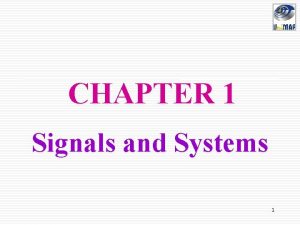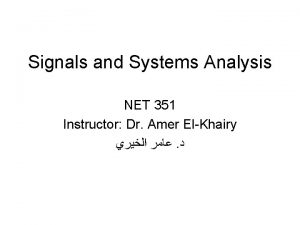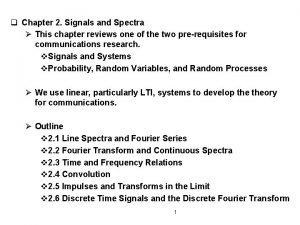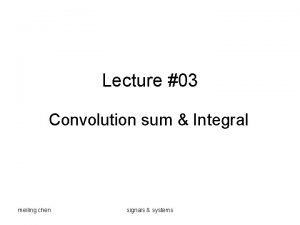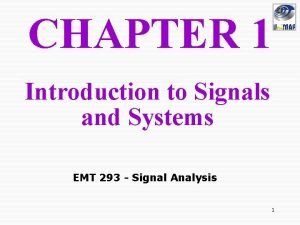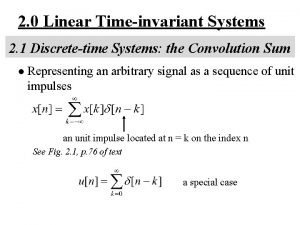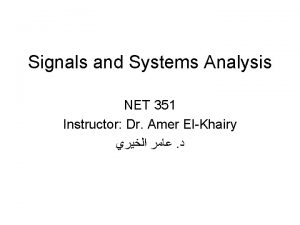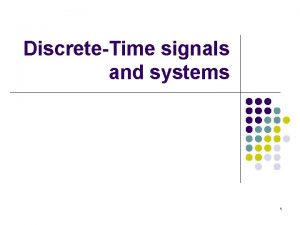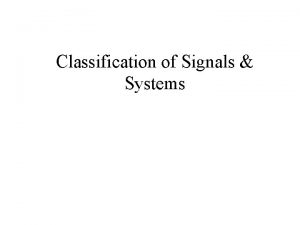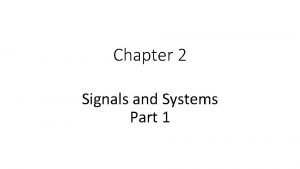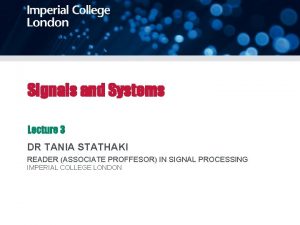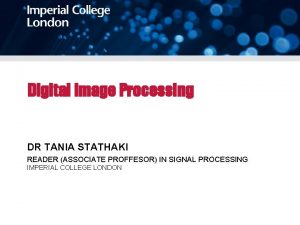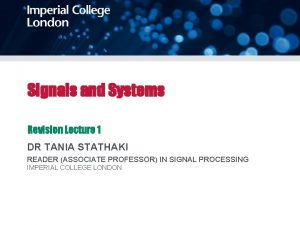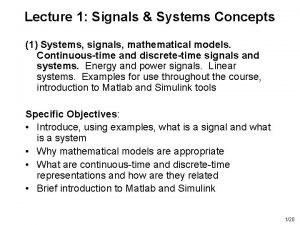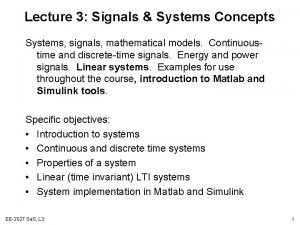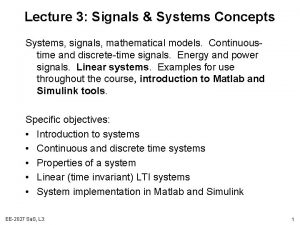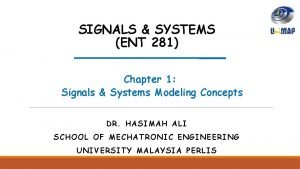Signals and Systems Lecture 2 DR TANIA STATHAKI



















- Slides: 19

Signals and Systems Lecture 2 DR TANIA STATHAKI READER (ASSOCIATE PROFFESOR) IN SIGNAL PROCESSING IMPERIAL COLLEGE LONDON

Definition of systems • Systems are used to process signals and to modify or extract information regarding those signals. • Physical systems are characterized by their input-output relationships. § E. g. electrical systems are characterized by voltage-current relationships for their components and the laws of interconnections (i. e. Kirchhoff’s laws). • We can derive a mathematical model for a system represented by (a so called) “black box”. SYSTEM MODEL

Classification of systems Systems may be classified into: 1. Linear and non-linear systems 2. Constant parameter and time-varying-parameter systems 3. Instantaneous (memoryless) and dynamic (with memory) systems 4. Causal and non-causal systems 5. Continuous-time and discrete-time systems 6. Analogue and digital systems 7. Invertible and non-invertible systems 8. Stable and unstable systems

Linear systems

Linear systems

Linear systems

Time-invariant systems Time-invariant system is one whose parameters do not change with time: TI System delay by T seconds TI System Linear time-invariant (LTI) systems are one of the main topics for both this course and the Control course in 2 nd year. Terminology by Lathi: LTIC = LTI continuous, LTID = LTI discrete.

Instantaneous and dynamic systems

Analog circuits are linear systems

Analog circuits are linear systems cont. zero-input response = zero-state response +

Causal and non-causal systems

Continuous-time and discrete-time systems

Analogue and digital Systems • • In discrete-time signals the samples are discrete in time, but are continuous in amplitude. Most modern systems are both discrete in amplitude and discrete in time. We often use the term “digital”. Consider for example the internal circuits of most current electronic devices, as for example, the MP 3 player. A-D Converter Digital System D-A Converter

Invertible and non-invertible systems

Stable and unstable systems • • • Externally stable systems are the ones in which a bounded input results in a bounded output (the system is said to be stable in the BIBO sense). Stability of a system will be discussed after introducing Fourier and Laplace transforms. More detailed analysis of stability is covered in the second year Control course.

Linear differential systems

Linear differential systems cont.

Linear differential systems cont. Also

Relating this course to other courses Time-domain
 Tania stathaki
Tania stathaki Tania stathaki
Tania stathaki Vodafone cloud computing hosting
Vodafone cloud computing hosting Communicative signals and informative signals
Communicative signals and informative signals Animals and human language شرح
Animals and human language شرح Communicative signals and informative signals
Communicative signals and informative signals 01:640:244 lecture notes - lecture 15: plat, idah, farad
01:640:244 lecture notes - lecture 15: plat, idah, farad Bn formula in fourier series
Bn formula in fourier series Signals and systems oppenheim solutions chapter 5
Signals and systems oppenheim solutions chapter 5 Precedence rule in signals and systems
Precedence rule in signals and systems Precedence rule in signals and systems
Precedence rule in signals and systems Convolution sum in signals and systems
Convolution sum in signals and systems Synthesis equation fourier series
Synthesis equation fourier series Convolution sum and convolution integral
Convolution sum and convolution integral Introduction to signals and systems
Introduction to signals and systems Convolution sum in signals and systems
Convolution sum in signals and systems Signals and systems
Signals and systems Signals and systems
Signals and systems Classification of signals and systems
Classification of signals and systems Signals and systems
Signals and systems
